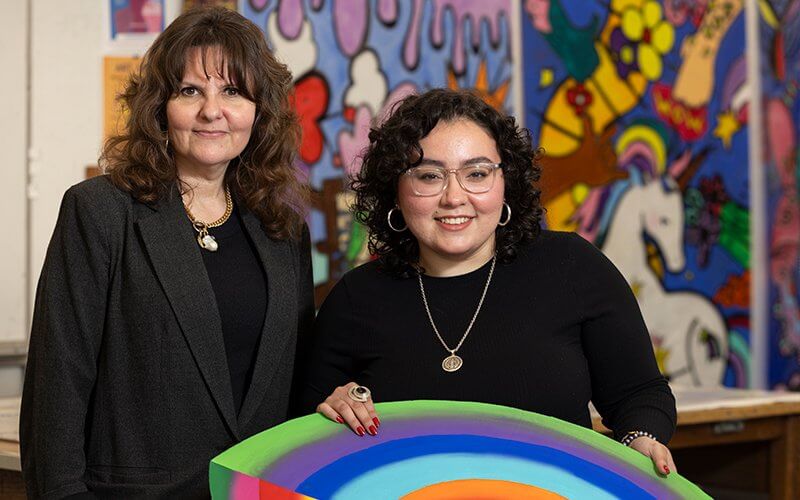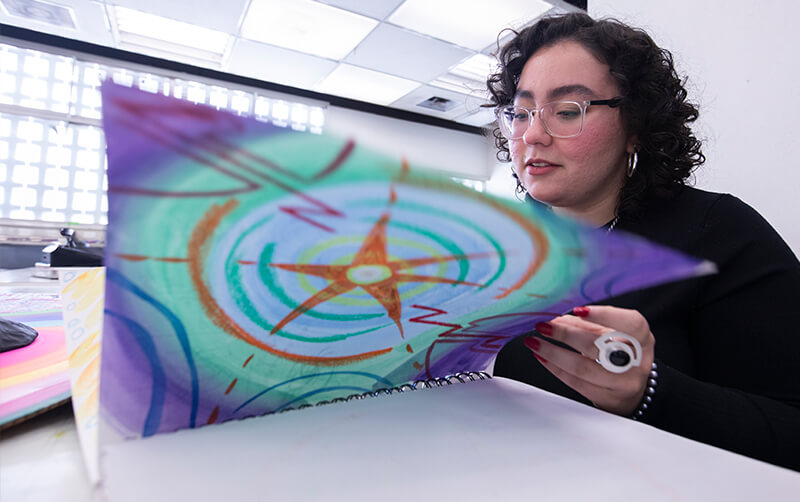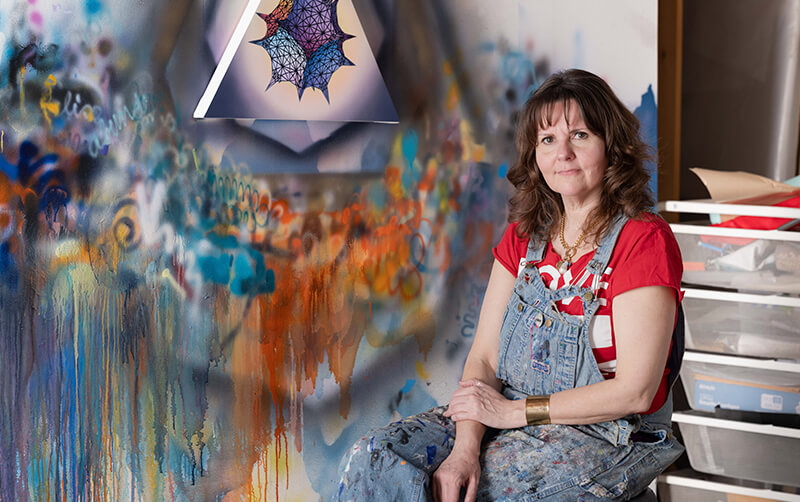
Cal State Fullerton faculty member Mary Anna Pomonis’ exhibition, “Quiver,” opened Jan. 5 at the Alto Beta Gallery in Altadena. Two days later, the entire body of artwork was engulfed in flames by the Eaton Fire, the second most destructive wildfire in California’s history.
“I have no words for the loss. I’m so grateful to all of the people who showed up for the opening to see it in person and know that the work will live on in their hearts and in mine,” Pomonis posted on social media after watching footage of the burning gallery.
The assistant professor of art considers the exhibition, the culmination of five years of labor, to be some of her most inspired work.
Grief quickly turned to motivation as Pomonis tapped into a professor’s mentality: What could she learn from this experience and teach her students?
“I could be an embittered artist, throw up my hands and say it’s a total loss,” she said. “But I won’t gain anything from this experience if I do that. Instead, I can look at this as an opportunity to expand my work: The story can only get better.”
‘There’s Nothing More Human Than Loss’
Art major Mia Aghili was asleep in her home on Jan. 7 when her sister woke her with news that the mountain behind their house was on fire. Her family members each grabbed a few items, expecting to be back, but the Eaton Fire claimed their home.
“Looking back, it’s surreal,” said Aghili. “It was hard to see our precious things and the memories of the house completely gone.

“I lost all of the art that I had made to date.”
Returning to campus for the spring semester, representatives from the College of the Arts reached out to Aghili to ask how they could help. Aghili asked for art supplies, which the college quickly stepped up to provide.
“In the chaos, all I wanted to do was create,” explained Aghili, who is focusing her studies on art education. “There’s nowhere to go but up from here. I will make art. I am an artist. I’m still here.”
Aghili is a student of Pomonis’, who teaches such courses as Creative Thinking in the Studio Art Classroom, Museum and Public Programs for Teaching Artists, and Art and Social Justice.
With students affected by the fires and other traumas, Pomonis observed that devastation brings intensity and focus to their work.
Pomonis encourages students who have experienced loss to lean into art: “You’re here to tell the story of what it is to be human in this time — and there’s nothing more human than loss.”
New Ideas Rising From the Ashes
Pomonis’ 10-piece “Quiver” collection comprised airbrushed paintings that explore the relationship between classic geometric shapes, feminism and Greek culture. Growing up Greek Orthodox, Pomonis was frustrated by the lack of female deities who embody such concepts as power, energy, light, safety and protection. To find inspiration, she looked to Greek mythology and ancient history.

Focusing on what comes next, Pomonis plans to reimagine the work that was destroyed and will present a solo show at the Charlie James Gallery in Los Angeles in December.
“The paintings are not really dead at all. In some ways, they’re more alive now because they’re gone — in the same way that when you lose a person in your life, their memory becomes so tangible that you feel their presence,” she explained.
“The fires have definitely shifted my worldview,” she said. “Instead of dwelling on the loss, I’m seeing a place where beauty emerges from the emptiness. It’s activating a different part of my imagination and I’m hopeful.”